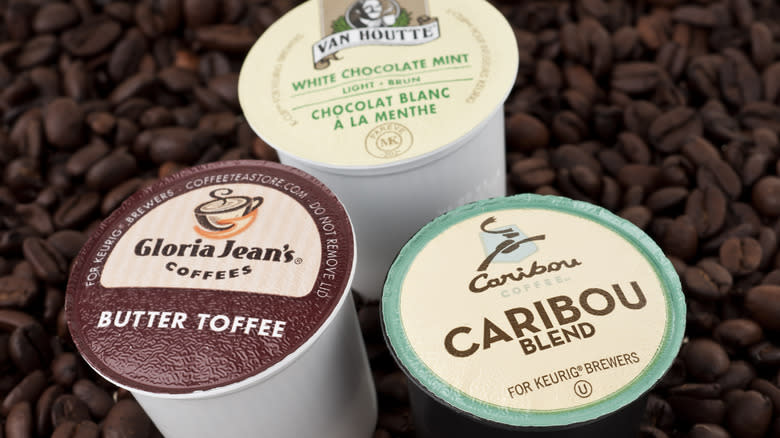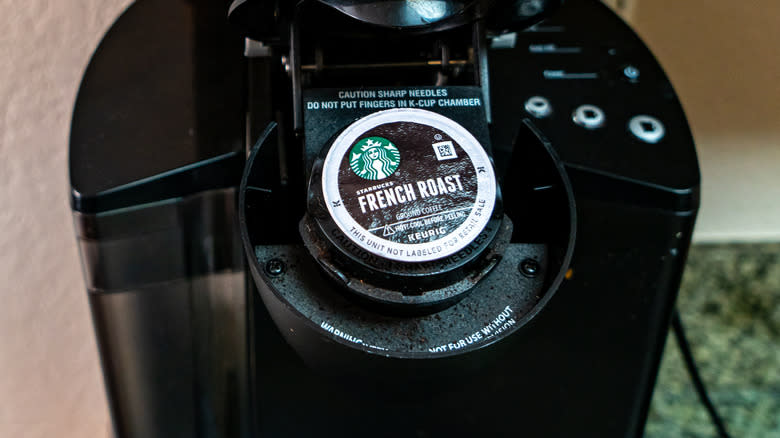The Inside Of A Coffee Pod Is Low-Key Disappointing

While the classic coffee pot brings that early-morning nostalgia, the coffee landscape is changing, and people are choosing to invest in more complicated devices. These days, it's not uncommon for homes to have a java setup that looks like a coffee shop. Much of this shift is credited to the rise of the Keurig system in the early 2000s.
The convenience of a Keurig was enticing because it offered freshly brewed coffee without the hassle of placing the filter and grounds into the pot and waiting for multiple cups to brew. Instead, a single button offered this warm, caffeinated beverage in a matter of seconds. Additionally, the cleanup was negligible since everything was encapsulated in the tiny plastic pods.
Over the years, though, consumers have questioned what exactly the inside of these Keurig coffee pods look like. With your classic K-cup, you can see from the outside that the top is a thin layer of foil that functions as a puncturable lid, which allows you to see the coffee grounds inside once used. However, the outer layer is a flexible plastic that holds a mini coffee filter inside like a hammock.
Read more: The Best French Press Coffee Makers Of 2022
Is All The Plastic Really Necessary?

Some of the more eco-friendly coffee pods look like pads that are made from biodegradable paper, similar to your common coffee filter, and filled with a variety of grounds. However, the more traditional and well-known K-cup variety always includes a plastic outside with these coffee pads inside. This has led consumers to question why so much plastic is used, raising health and environmental concerns.
In Green Mountain Coffee's response to health concerns over the possible BPA (Bispenol A) in their plastic K-cups, the company assured customers that while they do have a mix of plastics in their K-cups that contain some BPA, the Food and Drug Administration (FDA) has confirmed they are safe. The FDA states that BPA-containing food containers that are currently on the market are safe, adding that there are "no effects of BPA from low-dose exposure."
Unfortunately, mixing plastics like this doesn't allow for recycling, which has caused concern about this specific design. If you dissect a K-cup, you'll find that each piece is there for a reason. Coffee grounds begin to lose their freshness once exposed to oxygen and can mold if they come in contact with moisture. Therefore, the plastic pod not only protects the grounds in the filter but is also infused with nitrogen to extend the pod's shelf life. While the inside might not look like anything special, as you can see in this TikTok, the design is quite intricate to bring customers fresh coffee that tastes its best.
Read the original article on Mashed.

